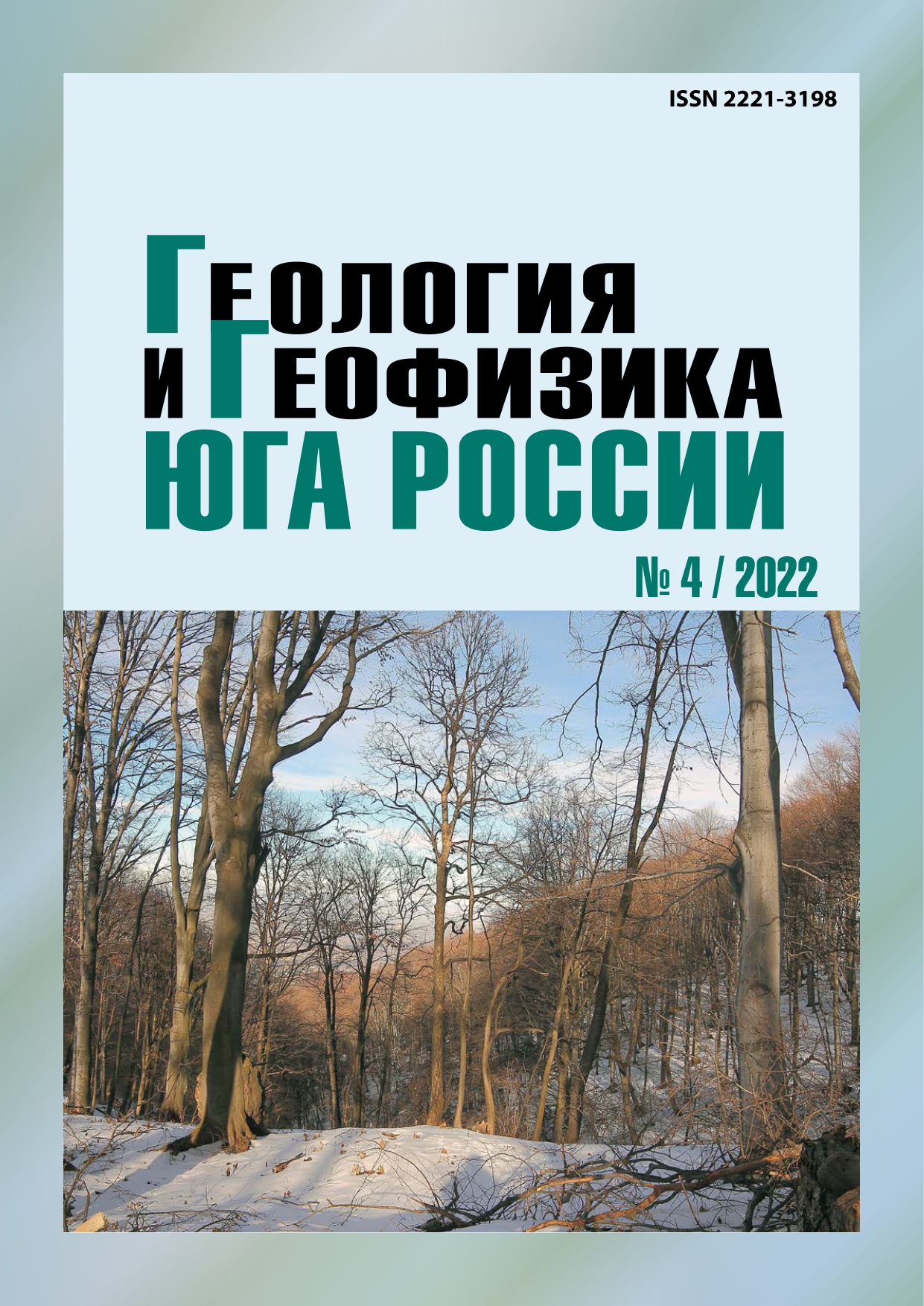Potentially gold-bearing mineralization in carbonaceous rocks of the Malka-Mushta ore node (North Caucasus)
Keywords:
black shales, ore mineralization, gold, sulfides, quartz veins, jasperoids
Abstract
The relevance of the research topic is determined by the need to study the material composition and conditions for the formation of large-volume mineralizations and enclosing black shale rocks of ore nodes of the North Caucasus. Materials. The results of the author’s field studies of various types of mineralization and enclosing black shale rocks in the bedrock outcrops along the banks of the Khasaut River valley of the Malka-Mushtinsky ore node (MMRU), slabs and anshlifs made from selected ores, stock materials of the results of prospecting works of Kabbalkgeology LLC 2007-2009. Methods. Geological documentation of the bedrock outcrops, production and microscopic examination of cuts and anshlifs of ore mineralization and host rocks. Aim. To identify and describe potentially gold-bearing mineralizations in the black shale rocks of the MMRU, to study the features of their material composition and to identify the main mineral-morphological types. Results. It is established that the potentially gold-bearing mineralizations of the MMRU are confined to the Upper Proterozoic carbonaceous rocks of the upper Malkin formation. According to morphology and material composition, three main mineral-morphological types of such mineralizations are distinguished: sulfide-interspersed, quartz-vein-veined and jasperoid. The first two types selectively develop from carbonaceous phyllites and phyllite – like shales of the upper part of the Malkin formation, the third type, jasperoids, from carbonate interlayers in carbonaceous rocks. In the composition of the sulfide-interspersed type, three varieties of sulfide mineralization are distinguished by morphology and origin: 1) inclusions of sedimentary-diagenetic sulfides (mainly pyrite) scattered in carbonaceous shales, 2) sulfide-quartz lenticular separations of catagenetic and (or) metamorphogenic origin, 3) isolation of typical metacrystals or their accretions, the formation of which is associated with late hydrothermal-metasomatic processes. It has been established that the quartz-vein-veined type of mineralization has a much wider distribution than sulfide-interspersed or jasperoid. It is represented by clusters of converging monotonously and (or) differently oriented low-sulfide and low-sulfide veins and veins of predominantly quartz and quartz-feldspar composition in carbonaceous shales, forming in aggregate sub-consistent stockwork, often subject to later dislocations. For the first time in the territory of the MMRU as part of the Malkin formation, interlayers and lenses of jasperoids in the black shale thickness bearing finely interspersed sulfide mineralization, mainly of pyrite composition, were revealed.
Published
2022-12-28
Section
Articles


